15 Fantastic Companion Plants for Hydrangeas
Hydrangeas are a beautiful addition to any garden, but pairing them with the right companion plants can truly enhance their beauty and create a thriving garden space. The best companions for hydrangeas are plants that share similar growing conditions, such as moisture-loving, shade-tolerant varieties. From vibrant flowers to lush foliage, these companions can provide a stunning contrast or complement to the hydrangeas blooms. Whether you’re looking to add texture, color, or attract pollinators, choosing the right plants will make a difference. Many of these plants thrive in the same moist, well-drained soil that hydrangeas love. By carefully selecting companion plants, you can ensure a garden that’s both visually appealing and easy to maintain.
Daylilies
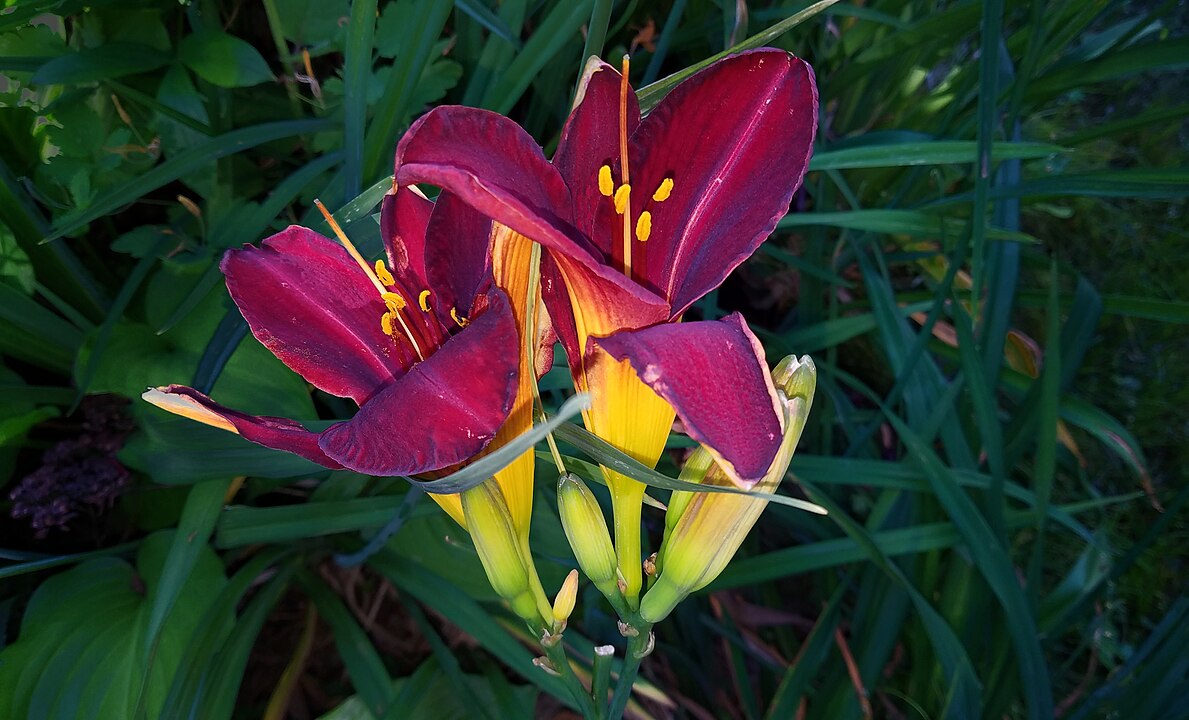
Daylilies make a fantastic companion plant for hydrangeas. They are easy to grow and tolerate various soil types, which works well with hydrangeas. These flowers bloom in vibrant colors, complementing the beauty of hydrangeas. They thrive in both sun and partial shade, much like hydrangeas, and can handle similar soil conditions. Their root systems are not invasive, so they will not compete with hydrangeas for nutrients. The varied bloom times of daylilies also provide additional seasonal interest in your garden. This means that while hydrangeas may have their peak bloom time in summer, daylilies can add color for a longer period, making the garden look lively.
The contrast between daylilies’ vibrant blooms and the often pastel or white flowers of hydrangeas adds a stunning visual effect to your garden. Daylilies’ low maintenance needs make them ideal for gardeners who want beauty without much fuss. They also grow well in the same moisture-rich, well-draining soil that hydrangeas need. When placed near hydrangeas, daylilies provide a great backdrop that highlights the hydrangea’s large blooms. Their ability to thrive in partial shade ensures that both plants can coexist without one overshadowing the other. The combination also offers seasonal variation, as daylilies can bloom earlier in the year than hydrangeas.
This post may contain affiliate links, which helps keep this content free. Please read our disclosure for more info.
Hostas
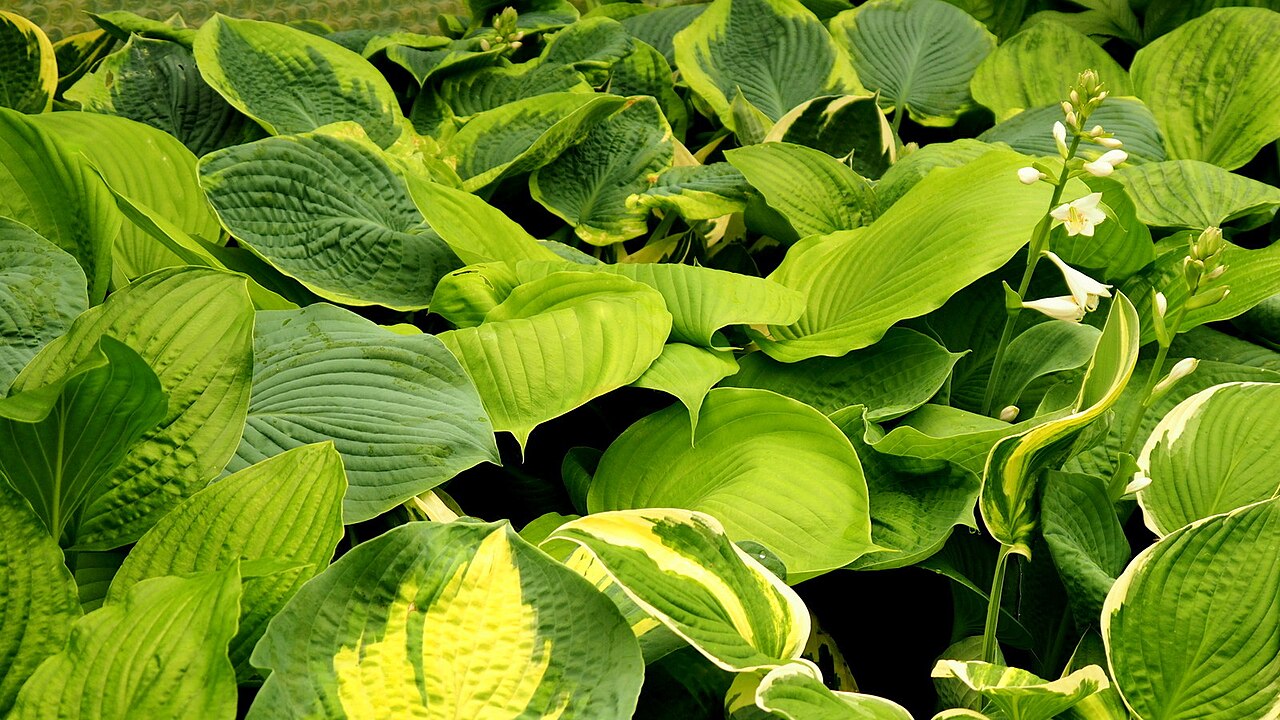
Hostas are another excellent companion for hydrangeas. These plants thrive in shady areas, making them a great choice for locations where hydrangeas also do well. Hostas have large, lush leaves that can fill in gaps around hydrangeas, giving the garden a fuller, more cohesive appearance. They come in a variety of colors, from bright greens to variegated shades, and they help accentuate the vibrant blooms of hydrangeas. Additionally, hostas are low-maintenance, needing little more than occasional watering and fertilizing. Their broad leaves can also help suppress weeds, reducing competition for nutrients in the soil.
The root systems of hostas are not invasive, so they will not disrupt the hydrangea’s growth. With both plants sharing similar soil and moisture requirements, they are a perfect pairing for gardeners looking to create a cohesive garden. Hostas can also thrive in the same types of soil that hydrangeas love, such as slightly acidic, moist, well-draining soil. The rich foliage of hostas contrasts nicely with the flowers of hydrangeas, creating an attractive texture contrast. This combination works well in shaded or partially shaded areas where both plants can receive enough light without being too exposed to the sun. As hostas provide foliage all year round, they also contribute to the garden’s year-round appeal.
Astilbe
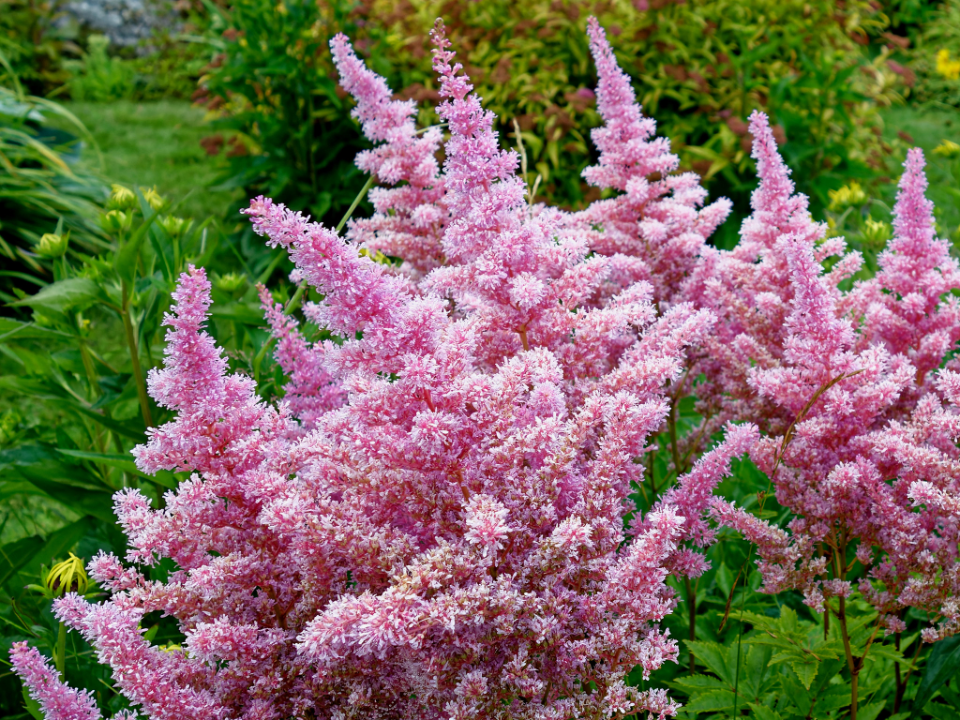
Astilbe are beautiful perennial flowers that thrive in moist, shaded areas, much like hydrangeas. Their feathery, plume-like flowers come in shades of pink, white, and red, which can complement the soft blooms of hydrangeas beautifully. Astilbe require similar growing conditions, such as rich, moist soil with good drainage, making them an ideal companion plant. They do well in the same garden spaces where hydrangeas thrive, and their soft, airy flowers add a delicate texture next to the hydrangea’s large blooms. Astilbe also enjoy slightly acidic soil, making it easy to grow them alongside hydrangeas in a shared garden environment.
These plants bring an added element of texture to your garden with their lacy, fern-like foliage. Their long-lasting flower spikes extend the bloom season in your garden, offering more color long after the hydrangeas have finished blooming. Astilbe also attract pollinators like bees and butterflies, adding more life to your garden. They can tolerate periods of dryness once established, but they still prefer a consistently moist environment, making them a good match for hydrangeas. By pairing these two plants, gardeners can ensure a colorful, low-maintenance landscape that thrives in shade.
Ferns
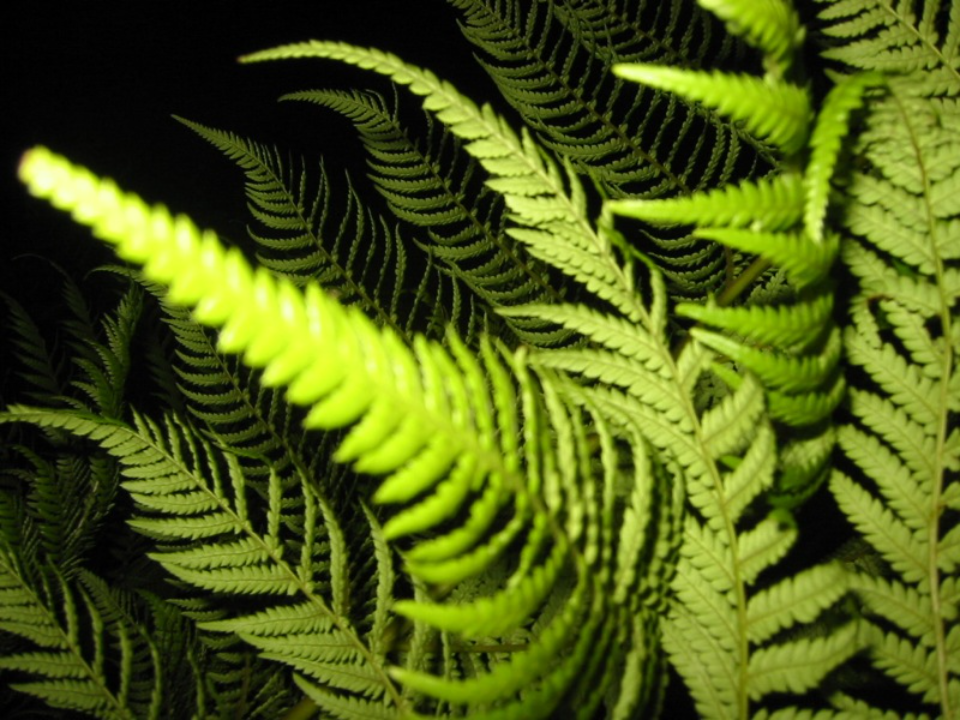
Ferns are ideal companions for hydrangeas in shaded, woodland-style gardens. These plants prefer the same moist, well-drained soil conditions as hydrangeas, making them a great choice for creating a cohesive and low-maintenance garden. Ferns come in a wide variety of species and sizes, allowing gardeners to select the best type to complement their hydrangeas. With their delicate, feather-like fronds, ferns offer a contrast to the bold, rounded blooms of hydrangeas. They help fill in the undergrowth around hydrangeas, creating a fuller, more textured garden space.
Ferns thrive in shaded areas where hydrangeas often do well, making them a perfect groundcover or border plant. They grow well in the slightly acidic, rich soils hydrangeas prefer, meaning both plants will flourish in similar conditions. The evergreen nature of many fern varieties ensures they provide greenery throughout the year, even when hydrangeas are not in bloom. By placing ferns in the surrounding area, gardeners can enjoy the contrast of fern foliage with hydrangea blooms. This pairing creates a layered effect, adding depth and variety to the garden, particularly in woodland or shaded garden areas.
Coral Bells (Heuchera)
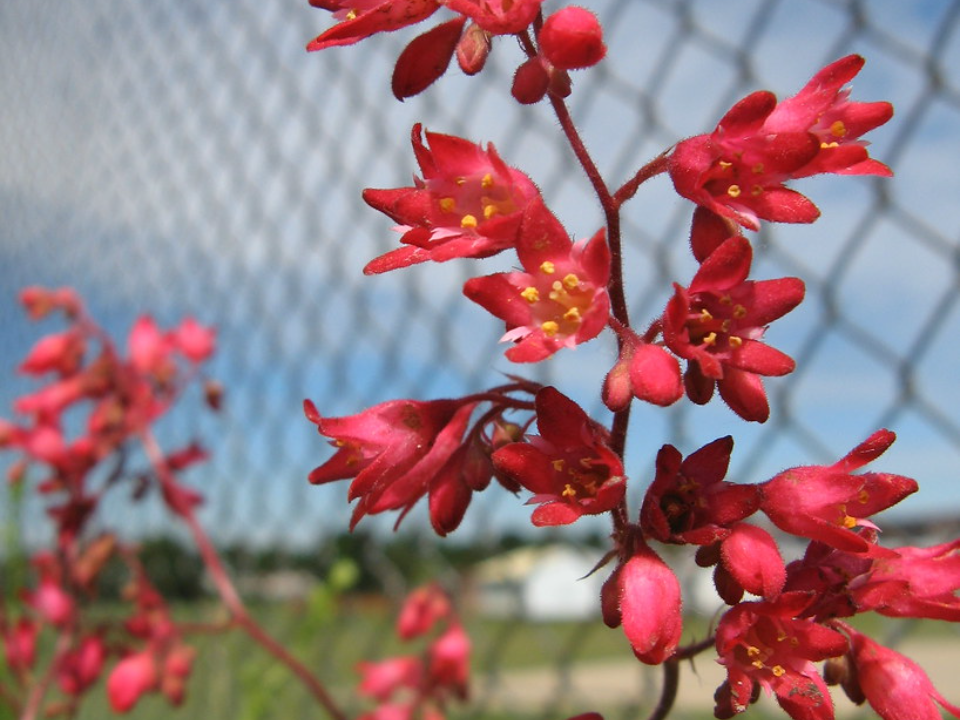
Coral Bells, or Heuchera, are excellent companion plants for hydrangeas due to their colorful foliage and compatibility with similar growing conditions. Heucheras are known for their vibrant leaves, which come in shades of red, purple, green, and silver. These colors contrast beautifully with the blooms of hydrangeas, adding an extra dimension to the garden. Heucheras prefer moist, well-draining soil, much like hydrangeas, and thrive in partial to full shade, making them a great fit for the same growing conditions. Their compact size also makes them ideal for planting in front of hydrangeas without crowding them.
The leaves of Heuchera plants are not only decorative but also have a texture that contrasts nicely with the smooth petals of hydrangeas. These plants grow well alongside hydrangeas in shaded garden beds, filling in spaces without overwhelming the hydrangea’s beauty. Heucheras are low-maintenance and resistant to pests, making them easy to care for. Additionally, they can handle a variety of soil types, as long as they remain moist and well-drained, much like hydrangeas. The combination of their colorful foliage and hydrangeas’ large blooms provides a stunning display of textures and colors.
Bleeding Heart

Bleeding Heart plants add a touch of elegance to any garden, especially when paired with hydrangeas. These plants are known for their distinctive, heart-shaped flowers that hang gracefully from arching stems. The delicate, pink or white flowers of Bleeding Hearts contrast beautifully with the bold, vibrant blooms of hydrangeas. Bleeding Hearts thrive in the same moist, well-draining soil that hydrangeas prefer, and they grow well in shaded or partially shaded areas. Their unique flowers provide an additional visual interest, complementing the fuller, rounded blooms of hydrangeas.
The foliage of Bleeding Hearts is fern-like, adding an airy texture to the garden. They are also known for their low maintenance and resilience in shady conditions, making them ideal for gardeners who want a hassle-free companion plant. These plants bloom in early to mid-spring, filling the gap before hydrangeas come into full bloom. This timing creates a dynamic garden with constant color change throughout the growing season. Their graceful, hanging flowers offer a romantic look that pairs beautifully with the traditional beauty of hydrangeas.
Lavender
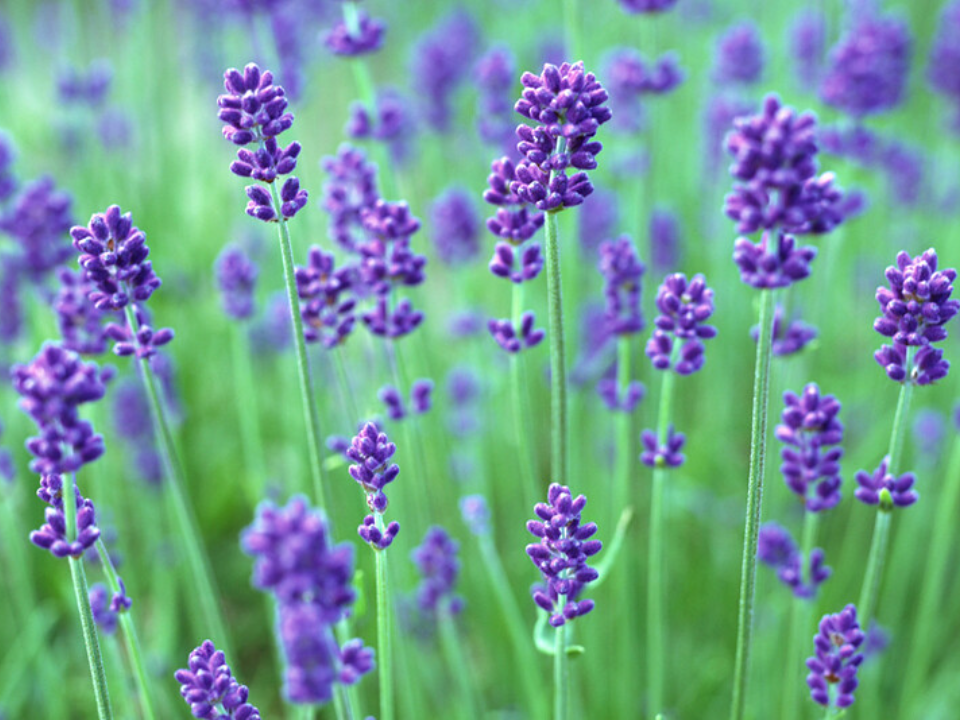
Lavender is an aromatic, drought-tolerant herb that pairs well with hydrangeas in many gardens. The contrast between the soft blooms of hydrangeas and the spiky flowers of lavender adds both texture and color to the landscape. Lavender thrives in full sun, so it is a great companion for hydrangeas planted in sunnier areas. However, it still works in partial shade, which makes it a versatile option for varying garden conditions. Lavender prefers slightly alkaline soil, while hydrangeas typically prefer slightly acidic soil, but they can coexist if the soil is balanced correctly.
The fragrance of lavender adds another layer of sensory appeal to the garden. The plant is low-maintenance, requiring little more than well-drained soil and occasional pruning. Lavender’s ability to attract pollinators, especially bees and butterflies, is beneficial for hydrangeas as well. The silvery-green foliage of lavender contrasts nicely with the lush green leaves of hydrangeas. This pairing works well in cottage gardens, herb gardens, or mixed flower beds, offering both beauty and fragrance.
Salvia
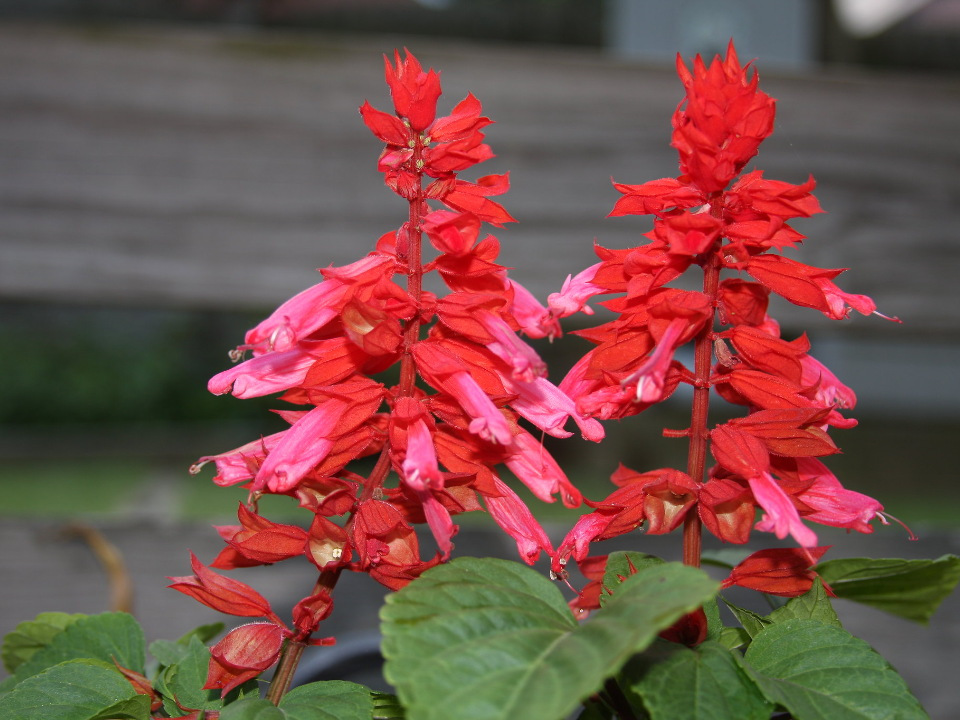
Salvia plants are another great option to pair with hydrangeas. These perennial plants have tall, spiky flowers that come in shades of purple, blue, and red, offering a striking contrast to the round blooms of hydrangeas. Salvia enjoys well-drained soil and sunny locations, which makes it an excellent choice for adding vertical interest next to the bushier hydrangeas. The long-lasting flowers of salvia provide color for weeks, making it a perfect companion for hydrangeas that bloom later in the season.
Salvia plants are drought-tolerant once established and are generally low-maintenance, requiring little attention from gardeners. They attract pollinators, which can benefit hydrangeas as well, enhancing the health and beauty of the garden. The bright flowers of salvia draw the eye upwards, complementing the low, rounded hydrangeas. This dynamic combination offers both texture and color contrast, creating a lively garden space. Salvia is a reliable perennial that can endure through different seasons, making it a solid companion for hydrangeas in various climates.
Sedum
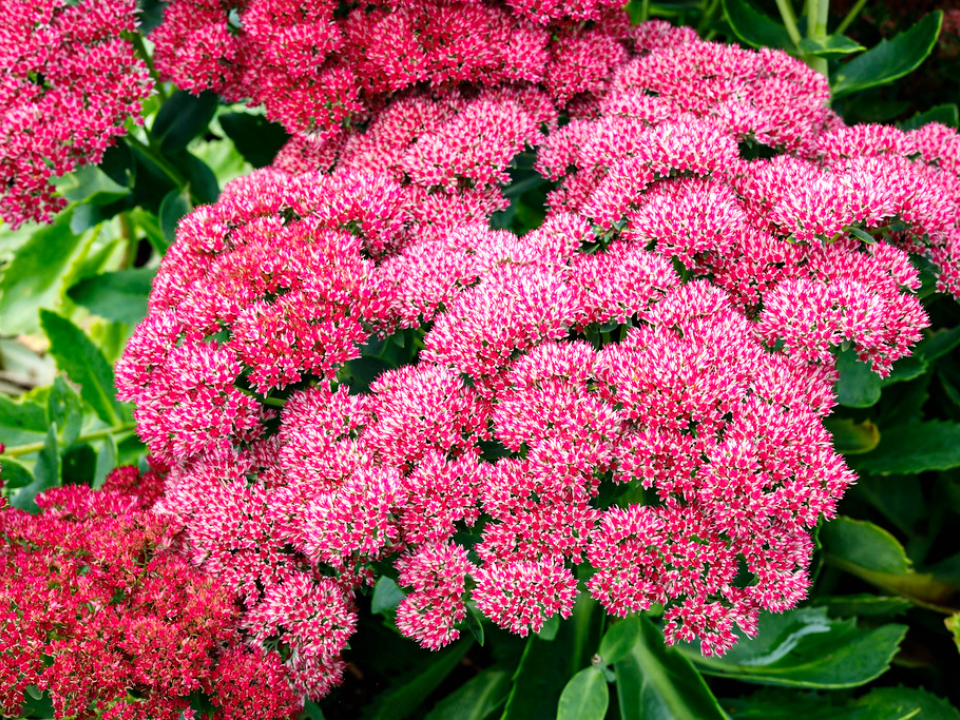
Sedum, or Autumn Joy, is a popular succulent plant that can work well with hydrangeas. Known for its thick, fleshy leaves and star-shaped flowers, sedum thrives in sunny locations with well-draining soil. This makes it a suitable partner for hydrangeas, which need consistent moisture. While hydrangeas require more water, sedum’s drought tolerance can balance out the two plants in a garden. Sedum’s flowers change color as they mature, adding interest throughout the fall when hydrangeas may have finished their bloom cycle.
The thick foliage of sedum offers a nice contrast to the soft petals of hydrangeas. It also attracts pollinators, particularly butterflies, which are beneficial for the overall garden ecosystem. Sedum plants can fill in spaces in the garden and are especially useful for adding color when other plants have faded. They grow well in a variety of soil types and are particularly suited to drier, rocky soils. Their low-maintenance needs make them an excellent choice for gardeners who want a low-effort companion plant for hydrangeas.
Japanese Forest Grass (Hakonechloa)

Japanese Forest Grass is an excellent companion plant for hydrangeas. It thrives in shaded areas and prefers the same moist, well-draining soil that hydrangeas need. The soft, arching foliage of this grass creates a beautiful contrast to the bold, round blooms of hydrangeas. Its graceful, flowing form adds a sense of movement to your garden, making the hydrangeas stand out even more.
This plant’s yellow or green hues offer a bright yet subtle complement to the deeper colors of hydrangeas. It’s particularly effective when planted around the base of hydrangeas to soften the garden’s edges. Japanese Forest Grass grows well in both spring and summer, offering texture and color throughout the growing season.
Lamb’s Ear (Stachys byzantina)
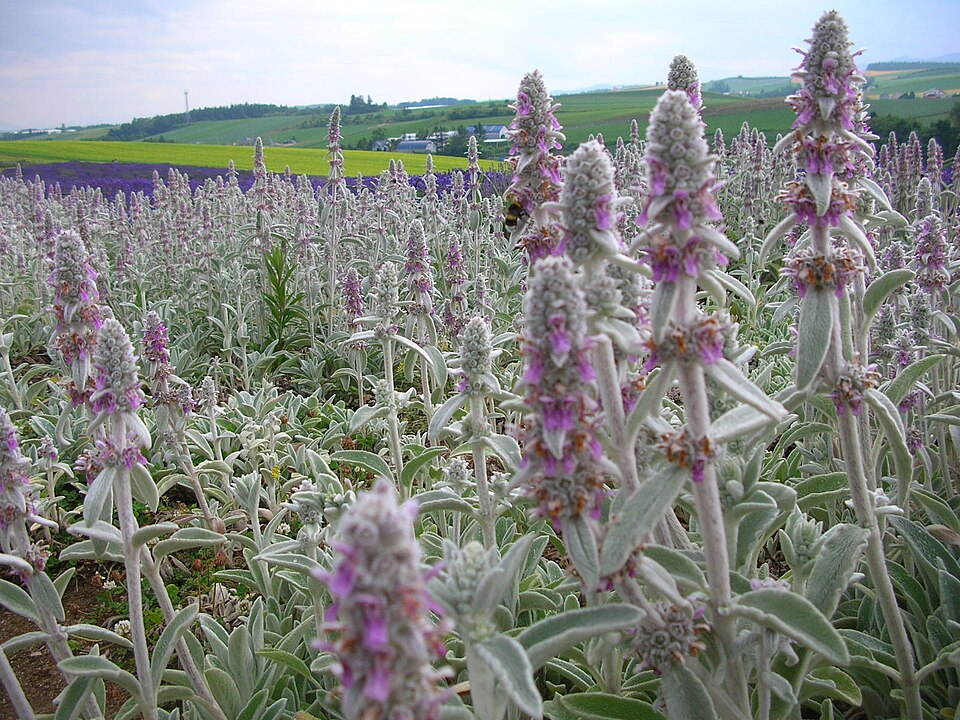
Lamb’s Ear is a low-maintenance, soft-textured plant that works well alongside hydrangeas. It has silvery, velvety leaves that provide a beautiful contrast to the vibrant blooms of hydrangeas. Lamb’s Ear thrives in well-drained soil with regular moisture, similar to hydrangeas’ preferred growing conditions. Its foliage provides a cushion-like effect around hydrangeas, softening the edges of garden beds and adding a unique texture.
This plant works well in both sun and partial shade, making it a versatile companion for hydrangeas. Its ability to tolerate a variety of soil conditions means it can coexist without competing for nutrients. Lamb’s Ear’s gentle color and texture add a calming element to your garden, complementing the boldness of hydrangeas.
Phlox
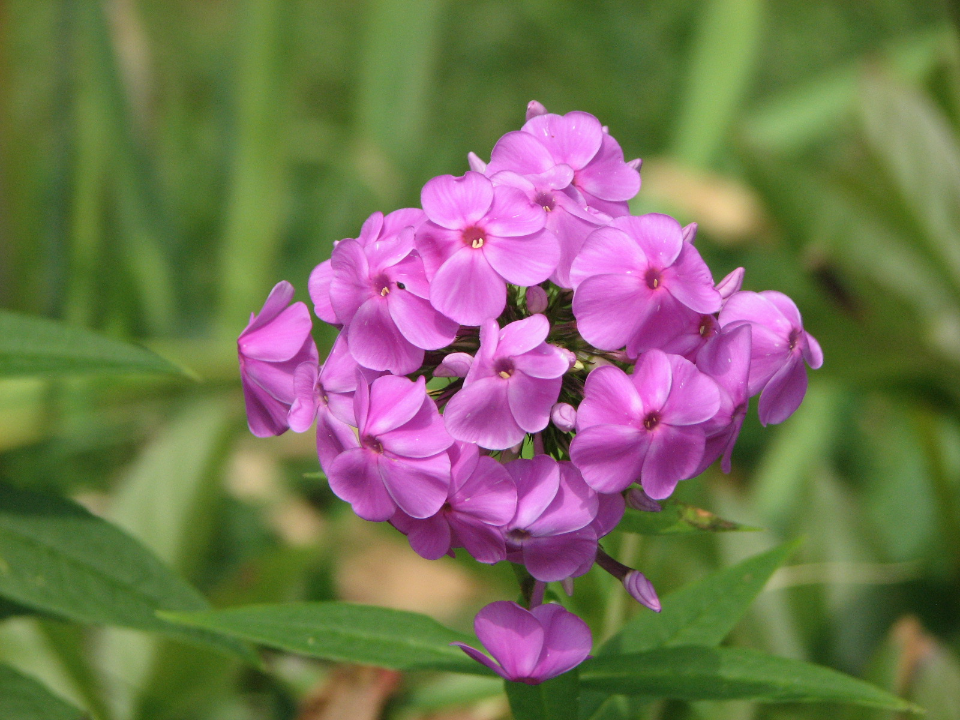
Phlox is a colorful, fragrant perennial that makes an excellent companion plant for hydrangeas. With its large, showy clusters of flowers in shades of pink, white, red, and purple, phlox provides a stunning contrast to hydrangeas’ blooms. Both plants thrive in moist, well-draining soil and do well in partial to full sun, so they can coexist in the same garden bed without any issue. Phlox’s flowers bloom in mid to late summer, extending the color palette of your garden even after the hydrangeas have peaked.
The bushy growth of phlox fills in spaces around hydrangeas, providing a dense, colorful backdrop. Phlox also attracts pollinators, like bees and butterflies, benefiting the overall ecosystem of the garden. With their long-lasting flowers, phlox ensures your garden remains vibrant throughout the season.
Tiarella (Foamflower)
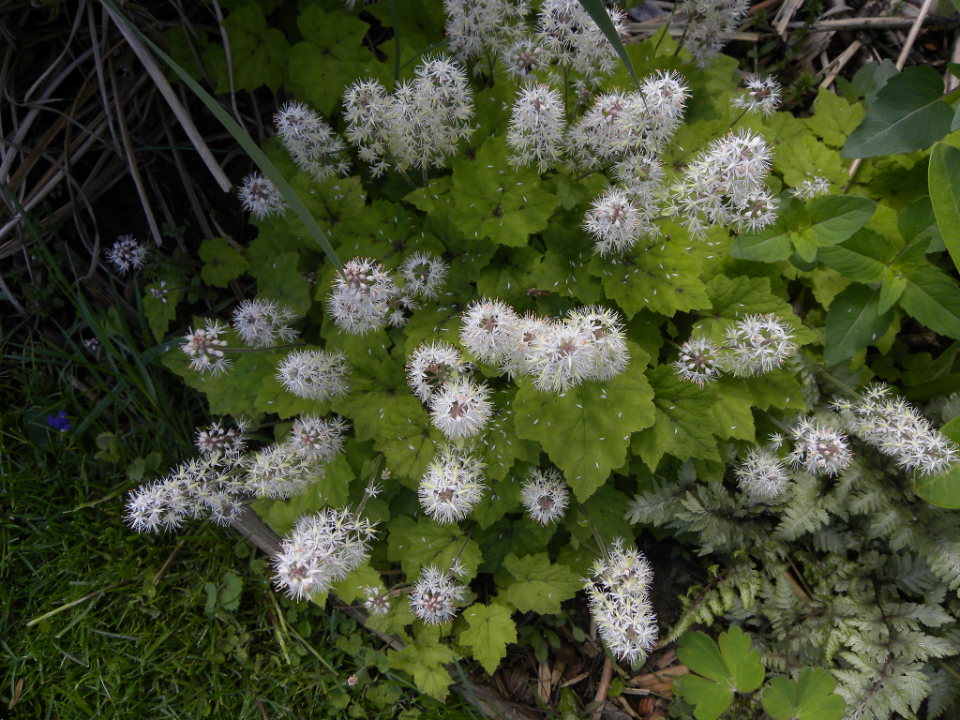
Tiarella, or Foamflower, is a wonderful companion plant for hydrangeas, especially in shaded gardens. It produces delicate, white or pink flowers on tall spikes, adding an elegant touch next to hydrangeas’ larger blooms. Foamflower thrives in moist, well-drained soil, much like hydrangeas, and it grows well in the partial to full shade.
The dark, glossy foliage of Tiarella adds texture and a rich contrast to the soft petals of hydrangeas. Its compact size makes it ideal for planting underneath or around hydrangeas without overwhelming the space. Tiarella’s delicate flowers and low-growing nature help create a soft, romantic look in the garden. The plant also attracts pollinators, further enhancing the health of your garden.
Sweet Woodruff
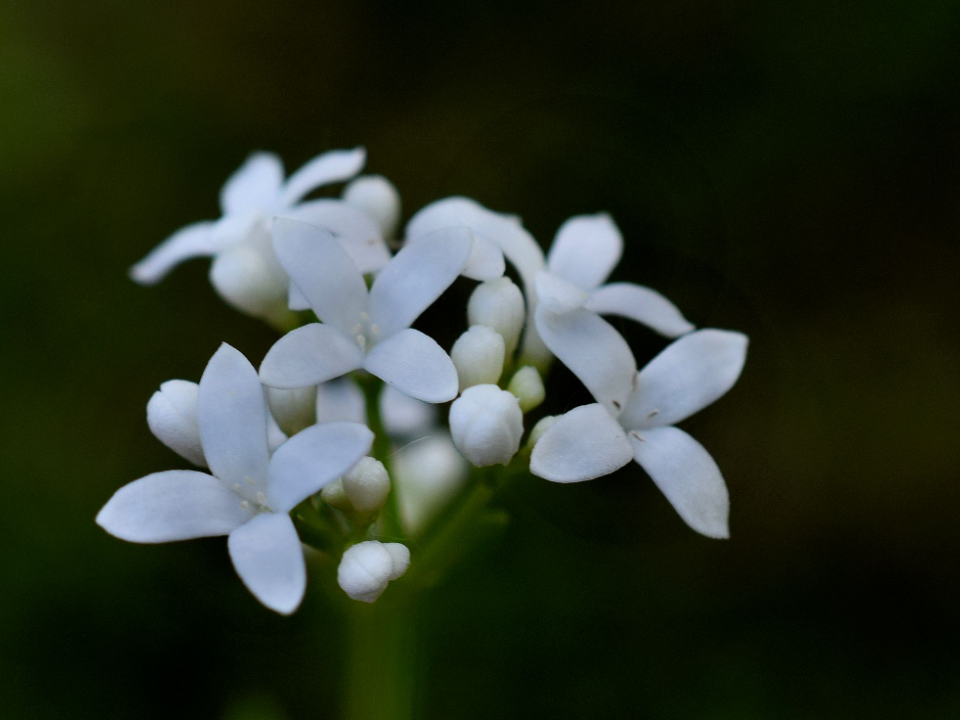
Sweet Woodruff is a charming groundcover plant that pairs well with hydrangeas, especially in shady gardens. This low-growing perennial spreads easily, filling in spaces around hydrangeas and providing a soft, carpet-like effect. Sweet Woodruff thrives in moist, well-drained soil and enjoys shaded areas, which makes it an excellent match for hydrangeas.
In spring, it produces small white flowers that complement the larger blooms of hydrangeas without competing for attention. Its fragrant foliage adds a pleasant scent to the garden, making it an enjoyable plant to have near hydrangeas. Sweet Woodruff also helps with moisture retention in the soil, which benefits hydrangeas during hot summer months. This plant’s delicate flowers and groundcover nature provide an understated elegance next to the bold beauty of hydrangeas.
Geranium (Cranesbill)
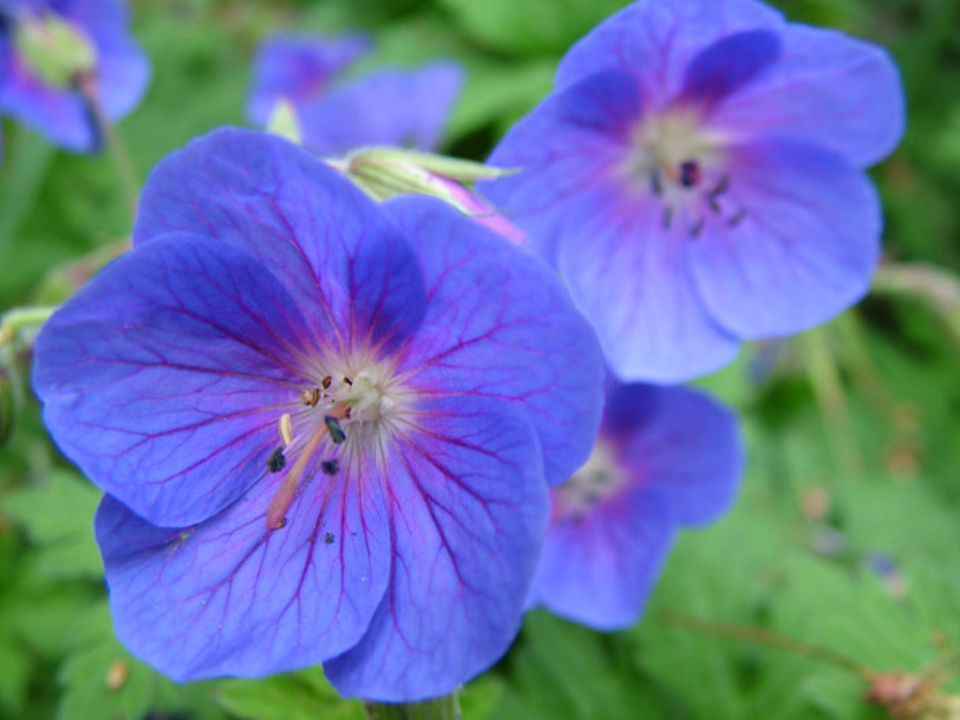
Geraniums, or Cranesbill, are hardy perennials that make great companions for hydrangeas in a garden setting. Their rounded, brightly colored flowers come in shades of pink, red, purple, and white, providing a colorful contrast to the soft, rounded hydrangea blooms. Geraniums are well-suited for moist, well-drained soil, and they thrive in partial to full shade, which makes them a great option for hydrangeas planted in similar conditions.
These plants produce long-lasting flowers in late spring to early summer, adding another layer of color to your garden when hydrangeas are coming into bloom. Their low-growing nature makes them perfect for planting along the base of hydrangeas, providing a colorful and textured groundcover. Geraniums are also pest-resistant and easy to care for, making them a hassle-free companion plant for hydrangeas. They are a reliable choice for gardeners looking to enhance the beauty of their hydrangeas with vibrant color.
This article originally appeared on Avocadu.
